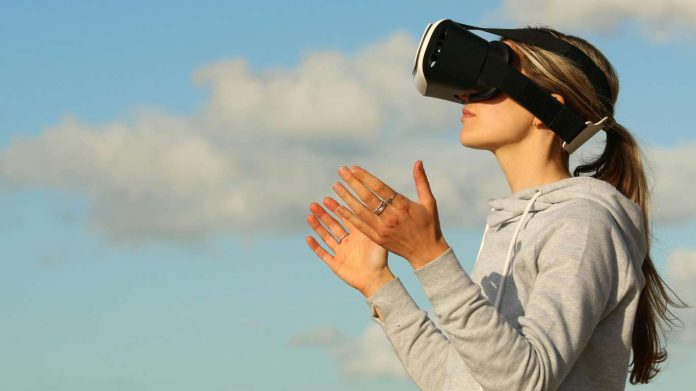Virtual reality technology will now be used to deliver psychiatric therapy through counselling for patients in the United Arab Emirates, according to a novel initiative called the Mental Health Immersive Lab.
The Emirates Health Services (EHS) revealed the Immersive Reality Laboratory on the first day of Arab Health 2024. This innovative smart technology tool is state-of-the-art. This is the first example of the unique treatment approach being introduced in the Middle East and marks the Middle East’s pioneering introduction of the distinctive therapeutic approach.
As part of increased patient care, in this immersive lab, a therapist has the opportunity to create a situation, making it more disturbing each time for a patient undergoing treatment.
A therapist may simulate the original traumatic incident responsible for the issue, such as a battlefield, a frequent trigger for Post-traumatic stress disorder (PTSD).
This approach uses immersive reality technology to enhance therapeutic results, utilizing artificial environments to create simulated scenarios for addressing psychological challenges and assisting patients in confronting their fears. The idea is for a patient to enter simulations and be coached with responses.
Therapy to be implemented in second half of 2024
Speaking to the media on Monday, Dr Ammar Humaid Albanna, Director of Al Amal Psychiatric Hospital, said, “We are in the early phases of piloting it in our hospital which is the main psychiatric hospital in the UAE under the EHS. This therapy will be implemented in the second half of 2024.”
According to Albanna, 5-10 per cent of the population exhibits symptoms of anxiety. “Five per cent have severe anxiety requiring interventions. Anxiety and mood disorders are the most prevalent conditions internationally. Many adults and children have anxieties related to heights and separation as well.”
Explaining the experience that is completely immersive using hi-tech screens, Al Banna emphasizes it is ‘like reality’.
The Technology
The technology works towards creating an innovative and interactive therapeutic environment that contributes to the development of advanced and personalized treatment plans for a larger segment of society compared to traditional methods.
He adds, “This is in addition to senses like tactile and others which will also be used to create experiences. Therapists or doctors will utilize this technology when working with patients who require it. The medic will first create a relaxing environment for the patient, once the patient feels relaxed, they can then start exposing them to the anxiety situation without him/her having to leave the room. It’s also worth noting that the patient doesn’t even have to wear any glasses.”
He highlights that a considerable number of individuals are averse to using VR glasses, which can sometimes be heavy and uncomfortable for the user. This technology can develop treatments for seniors, children, and individuals with sensory and cognitive difficulties such as anxiety, internet addiction, and some behavioral challenges associated with autism.

